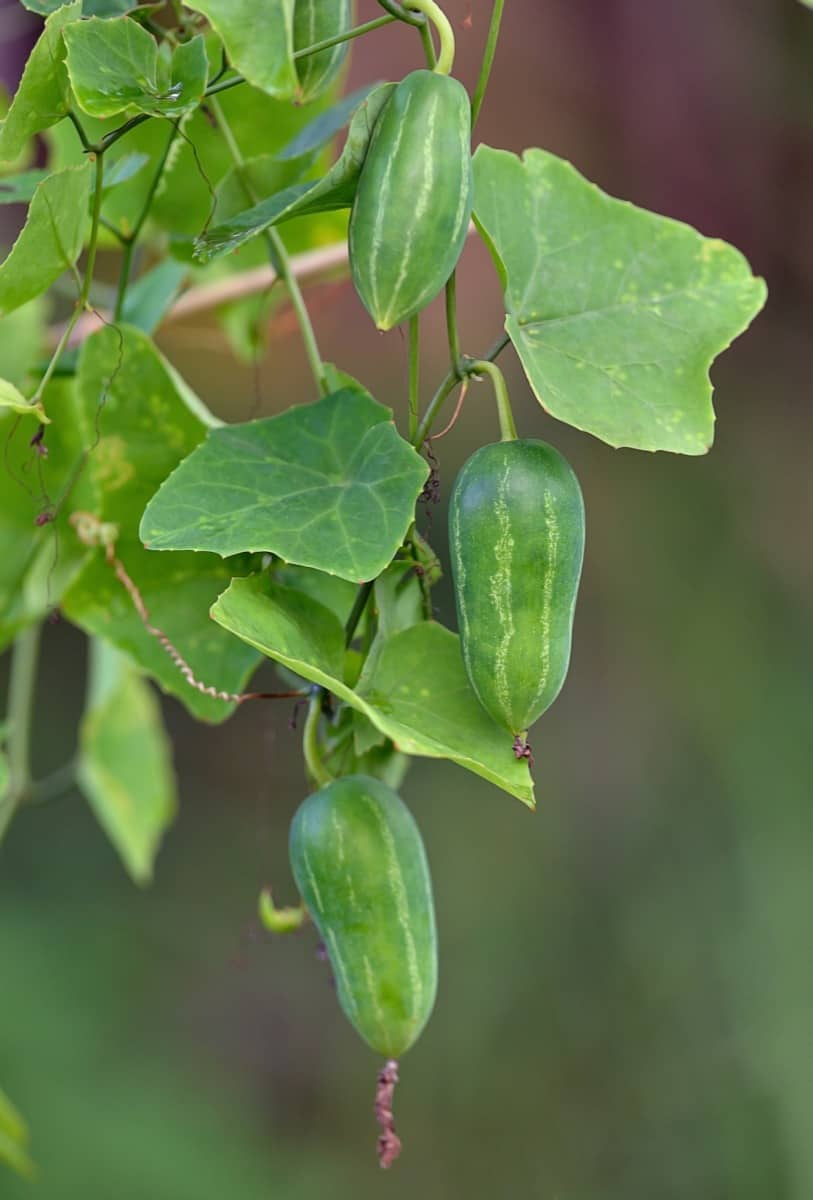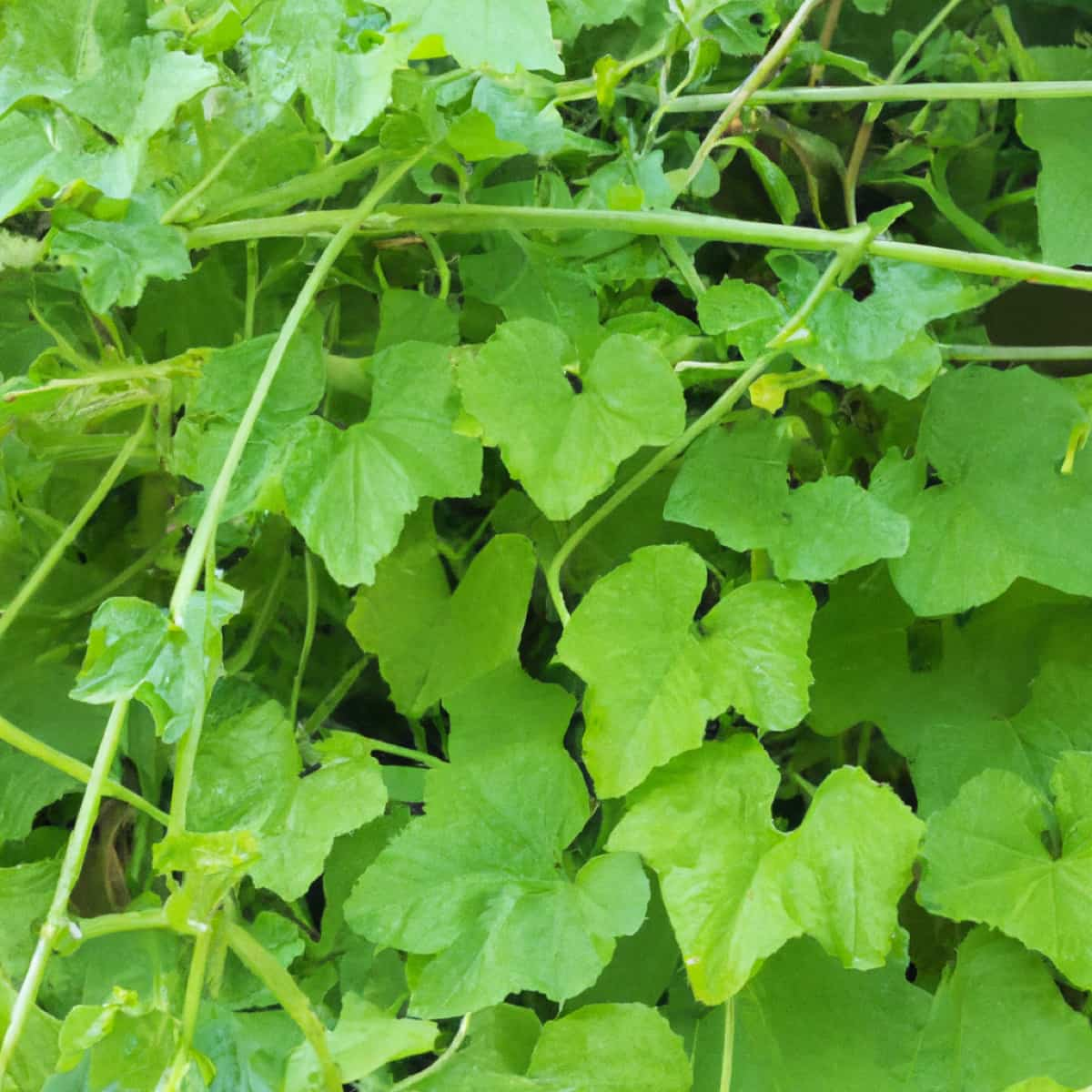Ivy Gourd, a popular tropical vegetable crop, needs to be improved by low fruit set due to inadequate female flower production, affecting its commercial cultivation. Researchers have attempted various approaches to increase female flower production, including hormonal treatments, nutrient management, and cultural practices.

Studies show that gibberellic acid (GA3) and naphthalene acetic acid (NAA) significantly increase the number of female flowers and overall yield. Micronutrient foliar application of boron, zinc, and manganese also improves female flower production and fruit set. Moreover, cultural practices like early pruning of apical shoots and lateral branches, training, and trellising increase the number of female flowers by promoting axillary shoot growth and increasing exposure to sunlight.
How to Increase Female Flowers in Ivygourd
Introduction to Ivy Gourd Cultivation
Ivy Gourd, or Coccinia grandis, is a highly adaptable tropical vegetable crop commonly grown for its edible young shoots and fruits. Cultivation is popular in warm, humid regions with well-drained soil rich in organic matter. Proper nutrient management is critical to Ivy Gourd cultivation, and balanced fertilizers with micronutrients like boron, zinc, and manganese are commonly used.
Cultural practices like pruning and training are also essential, controlling plant growth and promoting the development of lateral shoots for increased sunlight exposure. Pests and diseases, such as spider mites, whiteflies, and powdery mildew, are common threats that require integrated pest management strategies with biocontrol agents.
Understand the Anatomy of Ivy Gourd Flowers
Ivy Gourd flowers are small and inconspicuous, with five-part structures consisting of a calyx, corolla, stamens, and pistil. They grow on axillary or terminal racemes and have five green sepals that enclose the developing bud. The white or yellowish petals are fused at the base, while the stamens consist of a filament and an anther. The female flowers are larger than the male flowers and have a single pistil and no stamens, while the male flowers have five and no pistils. The female flowers produce fruit after pollination and fertilization.
Best Variety of Cultivation Ivy Gourd
Ivy Gourd has various cultivars, including Green Long, White Long, Red Long, Green Round, White Round, Red Round, Variegated, Dino, Jaffna, Kerala Giant, Manchurian, Miniature Green, Miniature White, Miniature Red, Miniature Variegated, Nepal Local, Nepal Selection, South Indian Long, South Indian Round, Sri Lanka Giant, Thai Giant, Thai Round, Trinidad Local, Trinidad Selection, and White Beauty.
Optimal Growing Conditions for Ivy Gourd
Ivy Gourd, or Coccinia grandis, is a tropical crop that requires specific growing conditions to thrive. Here are some optimal growing conditions for Ivy Gourd:
- Climate: Ivy Gourd grows well in warm, humid climates ranging from 24-31°C.
- Soil: Well-drained soil rich in organic matter is ideal for Ivy Gourd cultivation. The pH of the soil is 5.8 and 6.3.
- Sunlight: Ivy gourd requires full sunlight exposure for at least 6 to 7 hours daily.
- Water: Regular and consistent irrigation is important for Ivy Gourd cultivation. The crop requires moderate watering, and the soil should be moist but not soggy.
- Fertilizer: Balanced fertilization with micronutrients like boron, zinc, and manganese is crucial for healthy growth and fruit production.
- Pruning: Proper pruning techniques like pinching back the tip of the main stem and lateral branches encourage the growth of axillary shoots, which produce more female flowers and fruits.
- Trellising: Ivy Gourd is a vine that requires support to grow. Trellising supports and promotes the development of lateral shoots, increasing exposure to sunlight and enhancing fruit production.
In case you missed it: How to Grow Ivy Gourd in Greenhouse/Polyhouse: A Step-by-Step Guide for Seed to Harvest

Ivy Gourd Flowering Stage
The flowering stage of Ivy Gourd, or Coccinia grandis, usually occurs around 4-5 weeks after planting. This stage marks the onset of maturity in the plant and is characterized by producing male and female flowers. The male flowers are typically produced in larger numbers than female flowers and are responsible for producing pollen. The female flowers, on the other hand, are the ones that develop into fruits after being pollinated.
The flowering stage of ivy gourd is crucial for fruit production, and farmers often employ various techniques to enhance flower production and pollination. These techniques may include the application of plant growth regulators like gibberellic acid and cultural practices like pruning and trellising. The flowering stage usually lasts several weeks, during which the plant produces new flowers and fruits.
Factors that Affect Less Female Flowers in Ivy Gourd
- Temperature: High temperatures during the flowering stage can lead to fewer female flowers. Ivy Gourd prefers a temperature range of 20-30°C.
- Nutrient Deficiencies: Ivy Gourd requires adequate nutrients to produce female flowers. A deficiency in nutrients such as boron, magnesium, and calcium can lead to fewer female flowers.
- Watering: Over or under-watering during the flowering stage can cause a reduction in female flowers.
- Pest and Disease Infestations: Pests and diseases can attack the flowers and reduce the number of female flowers.
- Genetic Factors: Some cultivars may produce fewer female flowers due to their genetic makeup.
- Pollination: Poor pollination can also lead to fewer female flowers. Bees and other insects pollinate ivy gourd flowers, and the absence of pollinators can cause a decrease in the number of female flowers.
- Light Availability: Light availability also affects the number of female flowers. Insufficient light can lead to fewer female flowers.
10 Simple Tips to Increase Female Flowers in Ivy Gourd
- Prune the plant regularly: Pruning the plant regularly can enhance the number of female flowers. Cut off the excess growth to encourage the plant to put more effort into flower production.
- Provide adequate sunlight: Ivy Gourd gourd plants need a lot of sunlight to produce flowers. Ensure the plant gets at least six hours of direct sunlight daily.
- Provide adequate water: Ivy Gourd gourd plants need consistent and adequate watering to produce flowers. Water the plant deeply once a week or more frequently in hot and dry weather.
- Use organic fertilizer: Organic fertilizers such as compost or aged manure can provide the necessary nutrients for the plant to produce female flowers.
- Provide support: Ivy Gourd plants need support to grow upright and produce more flowers. Use a trellis or stake to support the plant.
- Control pests: Pests can damage the plant and reduce flower production. UseEco friendly methods like biological and natural to keep pests at bay.
- Provide adequate space: Ivy-gourd plants need space to grow and produce flowers. Plant them at least 2-3 feet apart.
- Maintain soil pH: Ivy Gourd plants prefer slightly acidic soil with a 6.0-6.8. Test the soil regularly and amend it if necessary.
- Avoid over-fertilization: Over-fertilization can lead to excessive vegetative growth and reduced flower production. Use fertilizers sparingly and according to the plant’s needs.
- Be patient: Ivy Gourd plants may take a few weeks to produce female flowers. Be patient and continue to care for the plant properly, and you will eventually see an increase in flower production.
In case you missed it: How to Increase Female Flowers in Bitter Gourd: A Guide of Bitter to Better

Conclusion
Proper care and attention are crucial in Encouraging the excellent growth of female flowers in Ivy Gourd plants. Gardeners can follow ten simple steps: pruning, providing adequate sunlight and water, using organic fertilizer, providing support, controlling pests, ensuring sufficient space, maintaining soil pH, and avoiding over-fertilization. Doing so can increase the chances of ivy gourd plants producing more female flowers and, ultimately, a more plentiful harvest.
- Feed Your Flock for Less: Top 10 Tips to Save on Chicken Feed
- Ultimate Guide to Ossabaw Island Hog: Breeding, Raising, Diet, and Care
- Hatching Answers: The Top 10 Reasons Your Chickens Aren’t Laying Eggs
- Eggs and Economics: Breaking Down the Cost of Raising Backyard Chickens
- Defend Your Greens: Proven Methods to Keep Iguanas Out of Your Garden
- Ultimate Guide to Cinnamon Queen Chicken: A Comprehensive Guide for Beginners
- Ultimate Guide to California Tan Chicken: Breeding, Raising, Diet, Egg-Production and Care
- Ultimate Guide to Marsh Daisy Chicken: Breeding, Raising, Diet, and Care
- 10 Types of Chicken Farming Businesses You Can Start for Profits